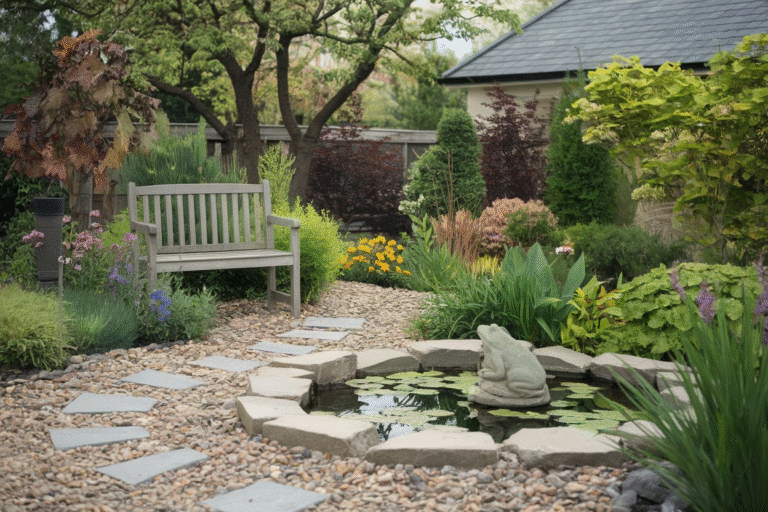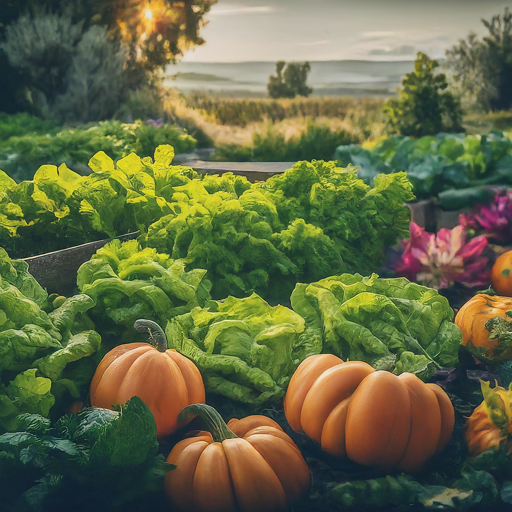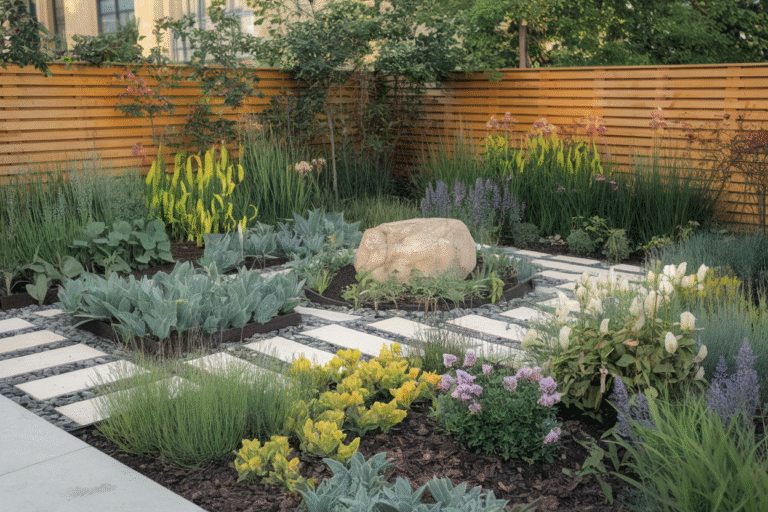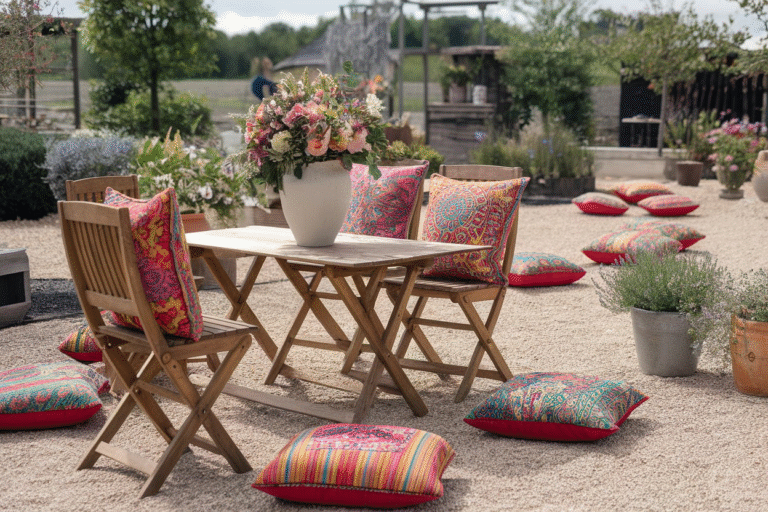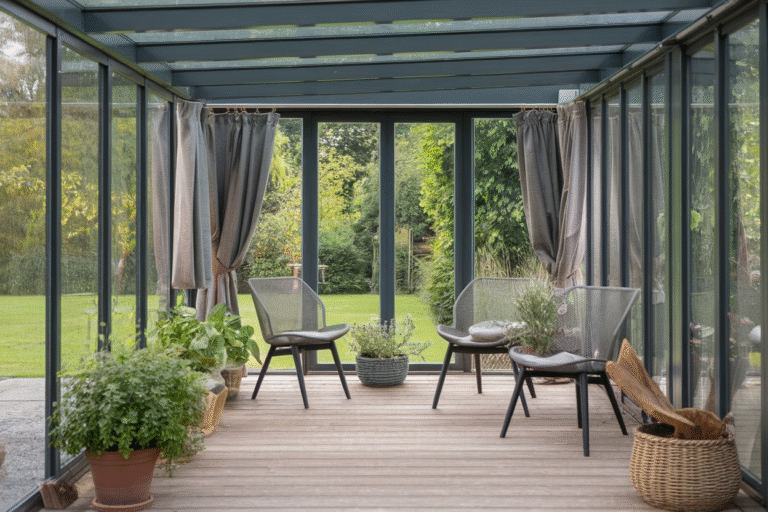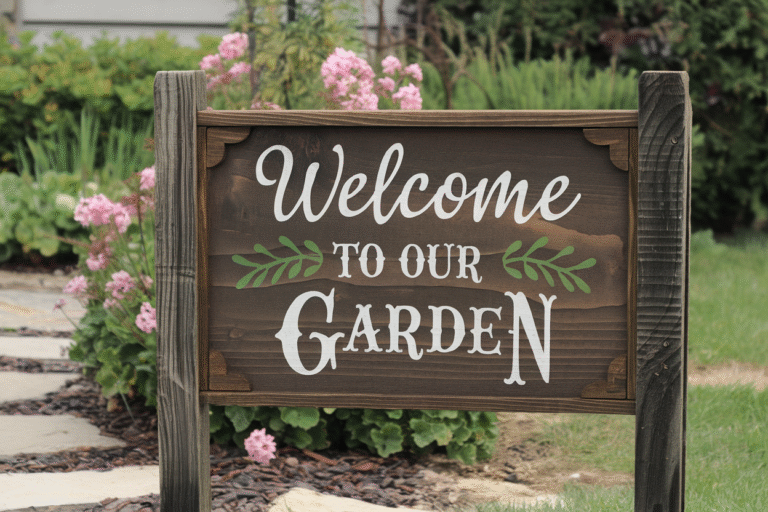23 Garden Pottery Ideas
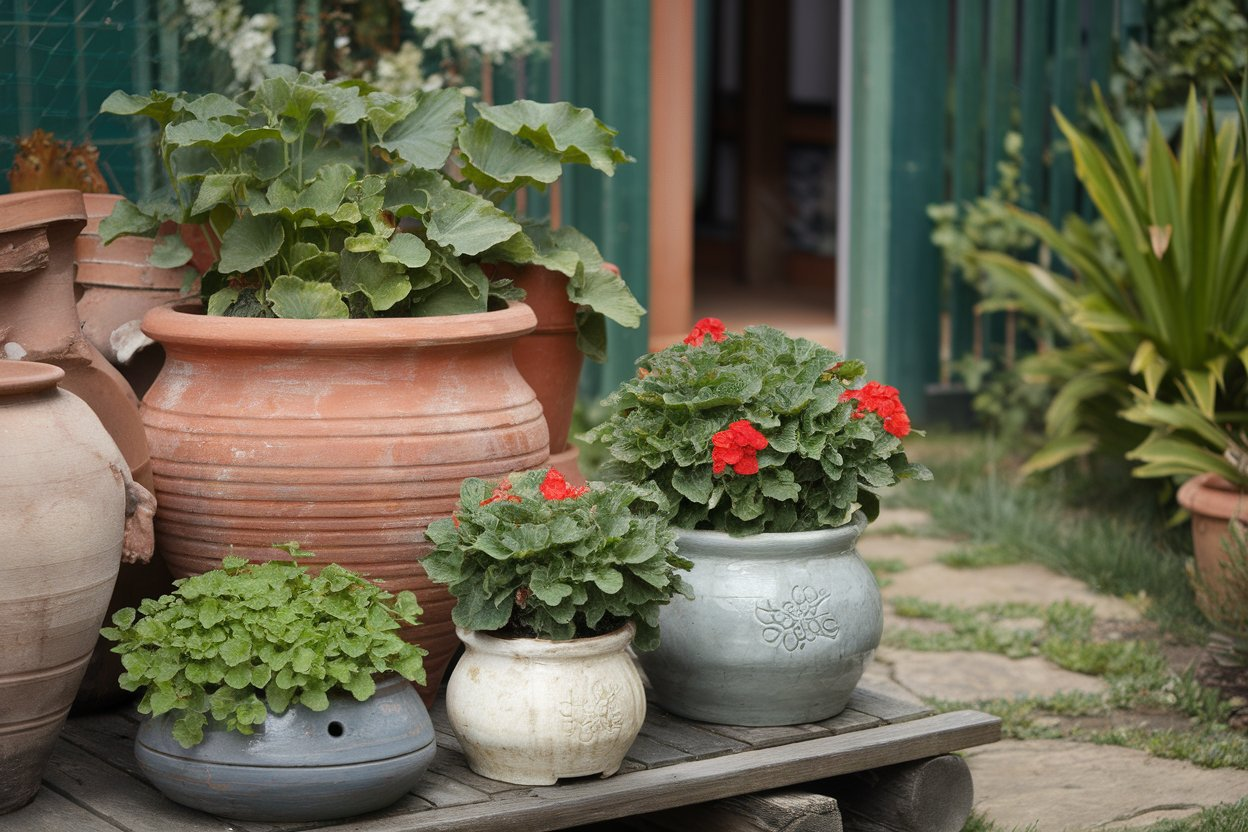
There’s something timeless and grounding about garden pottery. It’s the fusion of fire, earth, and human touch—transforming clay into something functional, decorative, and deeply personal.
If you’re someone who finds joy in getting your hands dirty and watching beauty bloom, then the right pottery can make your garden feel like an art gallery in full bloom. This isn’t about collecting expensive ceramics for display—this is about using pottery to elevate your garden’s soul.
1. Mix Materials for Visual Texture
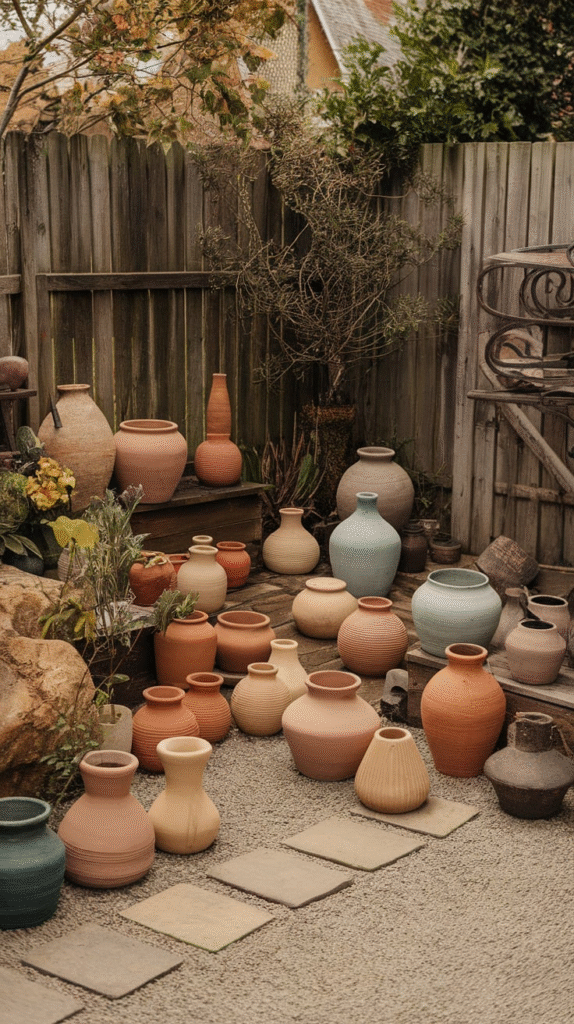
Blend terracotta, ceramic, metal, and even concrete pots together to create a layered look. Don’t worry about perfect matching—contrast is your friend. A rough concrete planter beside a shiny blue-glazed pot tells a story of balance: the wild and the refined sharing one shelf.
2. Use Oversized Pots as Sculptural Anchors
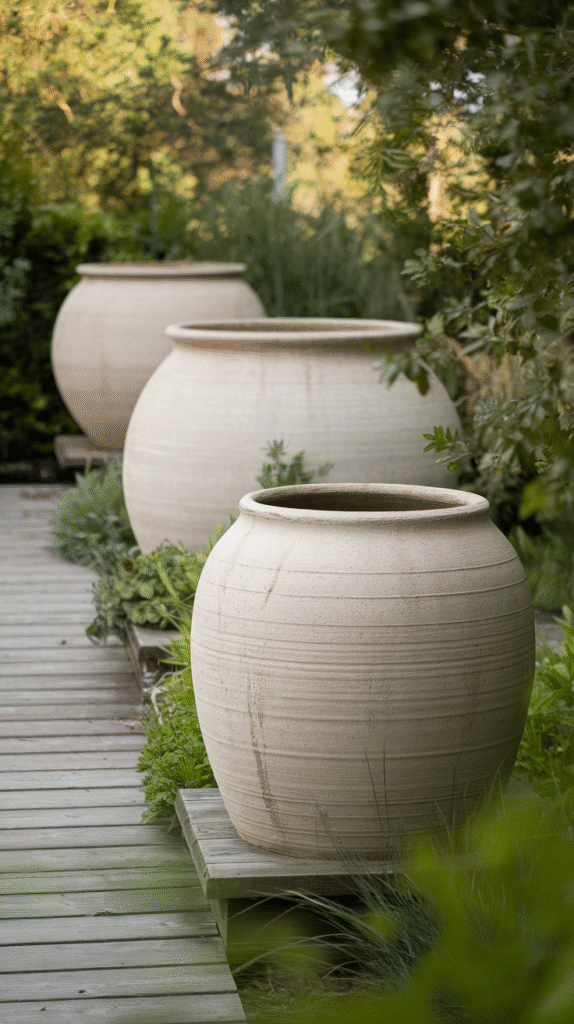
Don’t underestimate the power of scale. A giant urn or tall tapered pot can act like a sculpture in your garden. Even if it’s sparsely planted or left empty, it becomes an instant focal point.
I once placed a 3-foot amphora-style pot at the end of my garden path, and now everyone walks straight toward it—drawn like moths to a mythical flame.
3. Elevate Pots with Stands and Risers
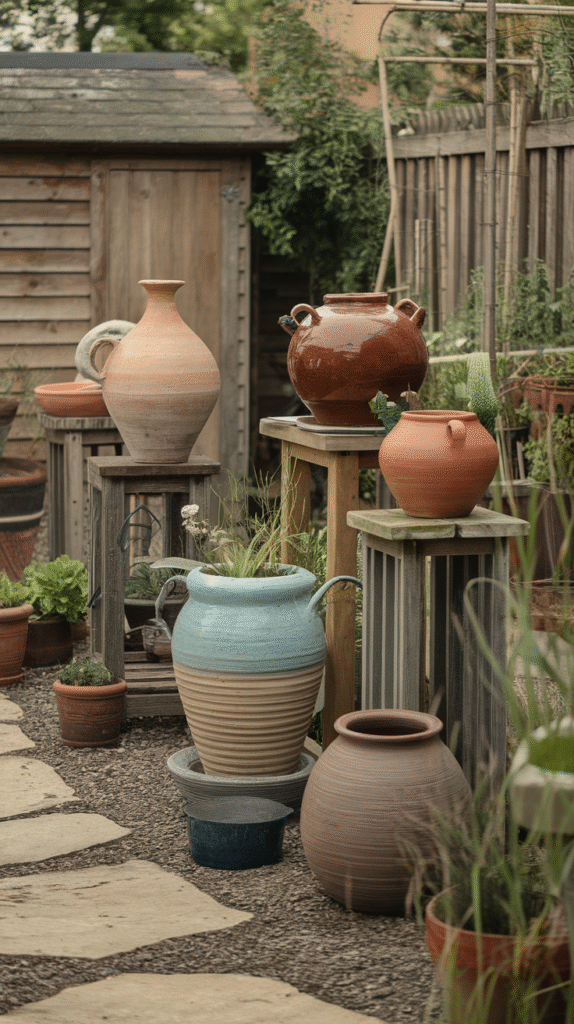
The ground isn’t the only stage. Use pot stands, bricks, or overturned bowls to give your pottery some height. It helps drainage, adds dimension, and prevents plants from becoming hidden under foliage. Bonus: It gives your garden a more intentional, designed feel.
4. Try Color Blocking with Painted Pots
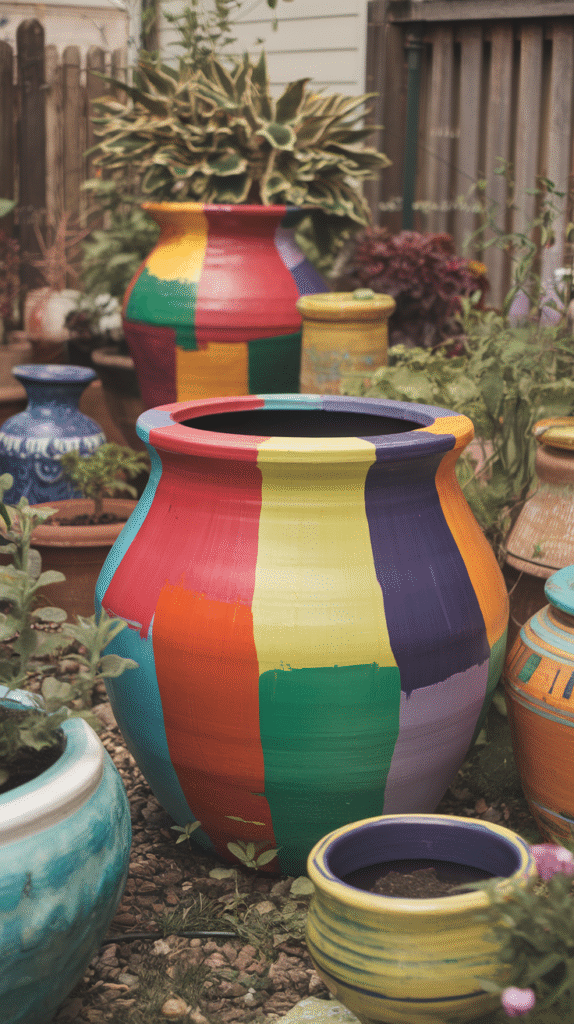
Paint plain terracotta pots in bold, matte colors like mustard yellow, slate gray, or forest green. Then group them by tone. The effect? Color blocking that feels modern and fun. I once painted five pots in different shades of blue and placed them on a white gravel bed—it felt like Santorini met my backyard.
5. Embrace Patina and Age
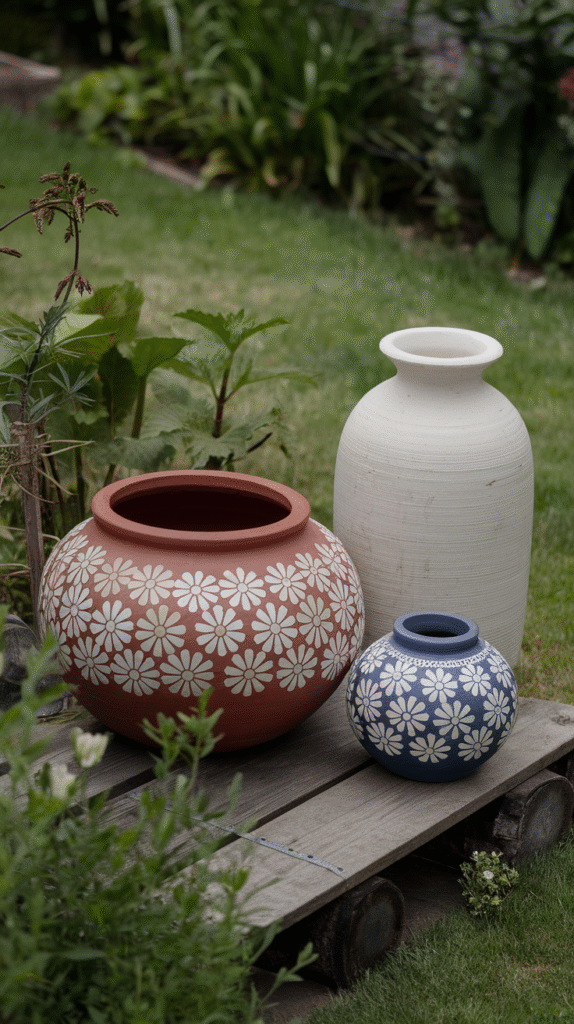
Weathered pottery has its own poetry. Let terracotta pots age naturally. The white calcium bloom or mossy film that forms over time gives character and makes your garden feel rooted and lived-in. Don’t scrub away the story—it’s earned.
6. Layer Heights with Tiered Groupings
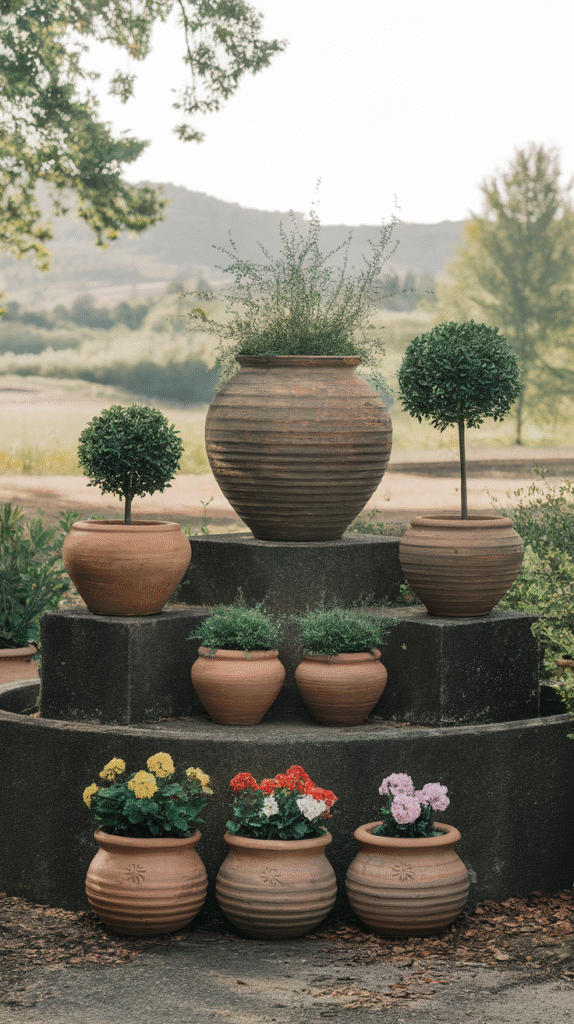
Place tall, medium, and short pots together to mimic the natural flow of a forest. It creates depth and movement. Think of it like a band—every plant and pot has a role, and together they create harmony.
7. Hang Pots on Fences and Walls
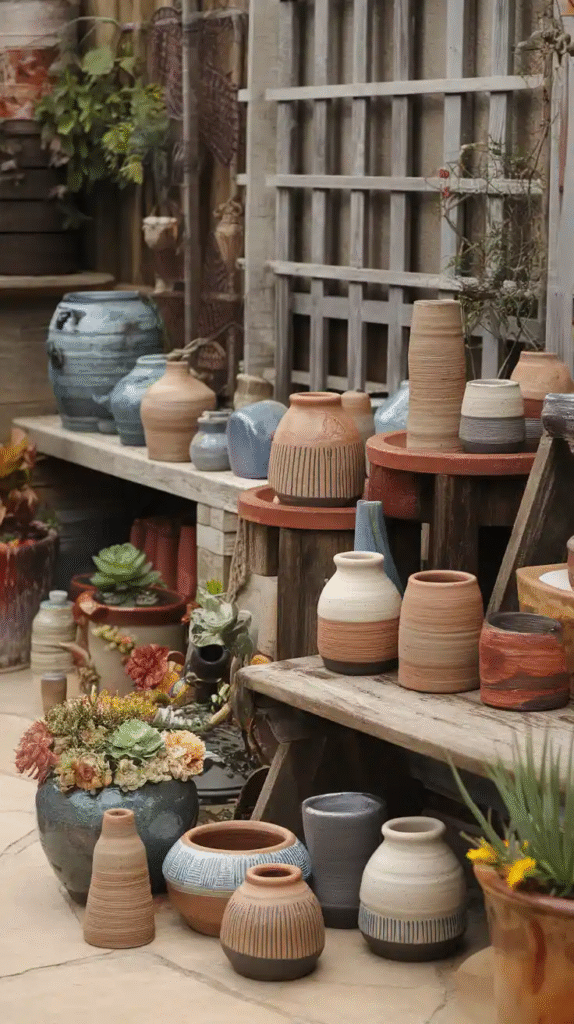
Use wall-mounted pottery holders, brackets, or even a wooden pallet to hang pots vertically. It’s ideal for small spaces or urban gardens. A fence filled with herbs in little ceramic pots turns bland boundaries into vertical sanctuaries.
8. Repurpose Ceramic Kitchenware

Old teapots, ceramic bowls, or even large mugs can be upcycled into adorable mini pots. Just drill a drainage hole or add gravel at the bottom. I once planted succulents in chipped cereal bowls, and now they’re a conversation starter on every garden tour.
9. Use Pottery to Frame Entryways
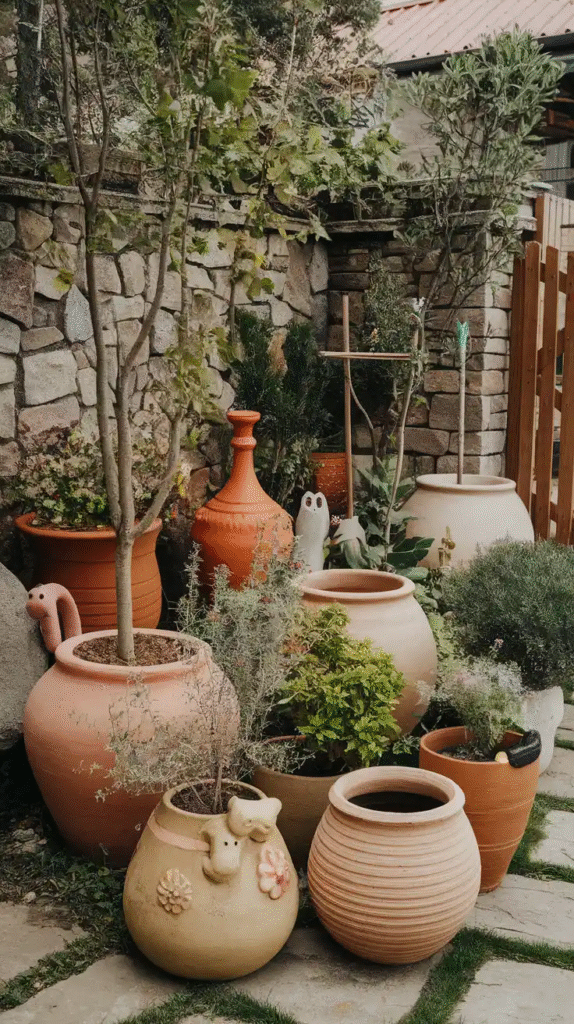
Line a path, steps, or porch with matching pottery pieces to frame entrances. This creates a sense of rhythm and leads the eye forward. I use this technique with tall terracotta flanking my gate—it feels like being welcomed by guardians made of earth.
10. Create a Pot Fountain
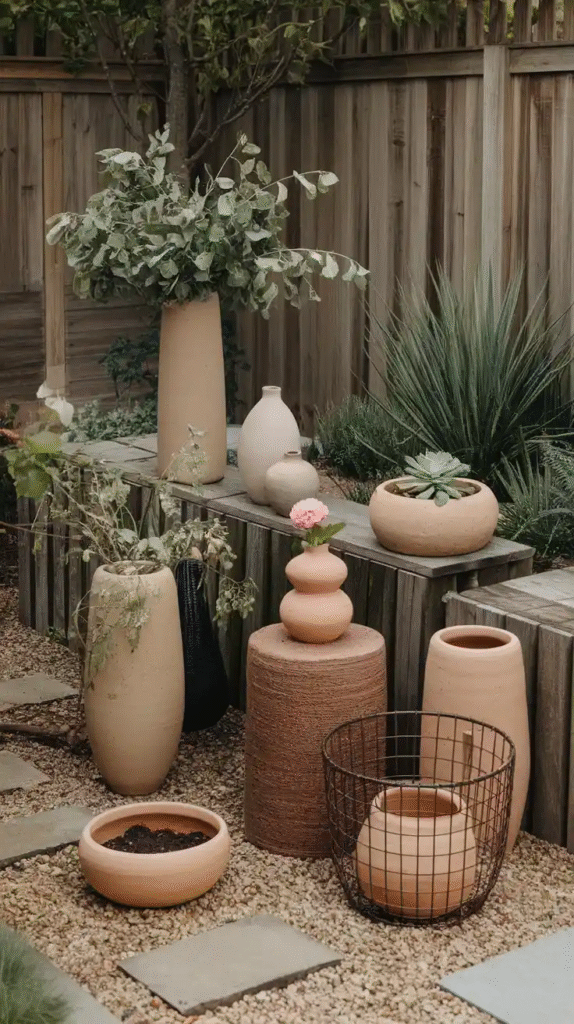
Combine pots of different sizes into a cascading water feature. The top pot holds the pump, and water spills into the lower tiers. The sound alone is worth the effort—and it’s easier than it sounds to build.
11. Experiment with Mosaic Pottery
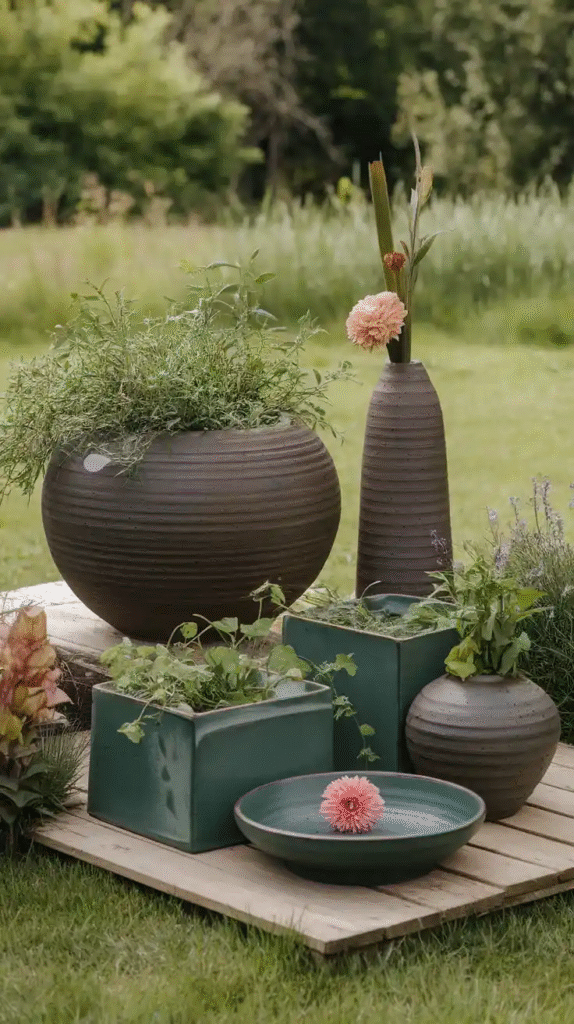
Use broken tiles, pebbles, or old plates to mosaic your pots. This is a brilliant way to personalize them and reuse cracked ceramics. It’s messy but therapeutic. Every time I look at my sunflower mosaic pot, I remember the weekend my niece and I made it—sunburned, sticky-fingered, and grinning like fools.
12. Use Black Pots for a Modern Edge
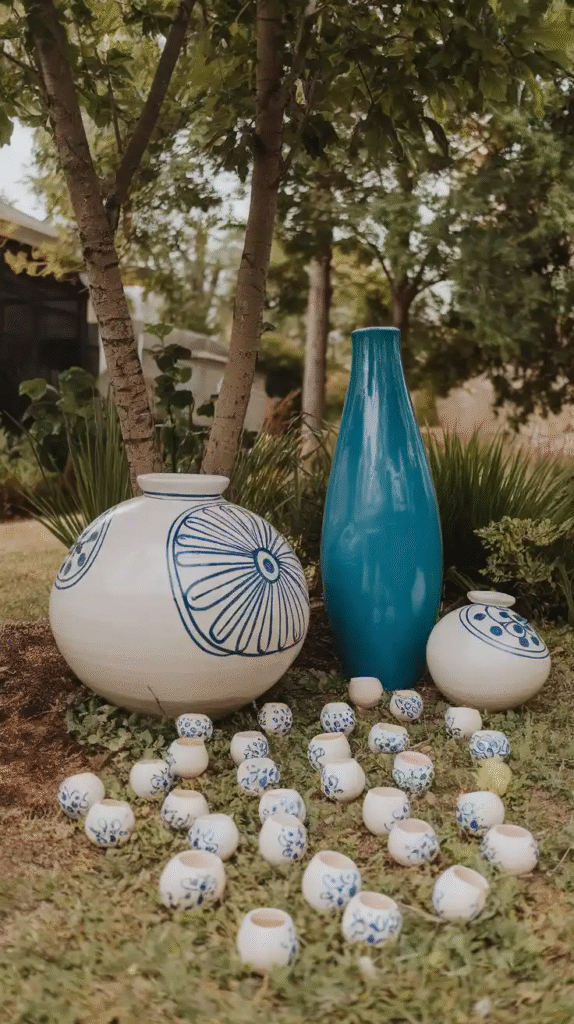
Matte black ceramic pots create strong contrast against green foliage. They’re minimal, bold, and perfect for modern or monochrome gardens. Think of them like the little black dress of garden design—effortless and always chic.
13. Group Herbs in Coordinated Clay Pots
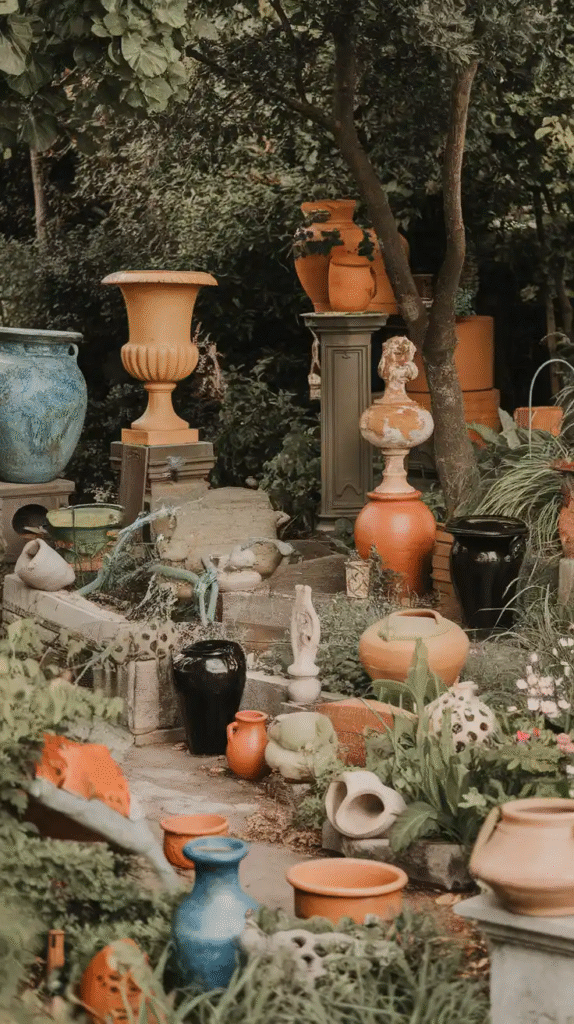
Herbs don’t need to be hidden in the back. Group your mint, rosemary, thyme, and basil in matching but differently sized clay pots. Add painted labels or wooden tags for a charming kitchen-garden vibe. Place them close to the door—you’ll use them more when they’re easy to snip.
14. Create a Pot Cluster Island
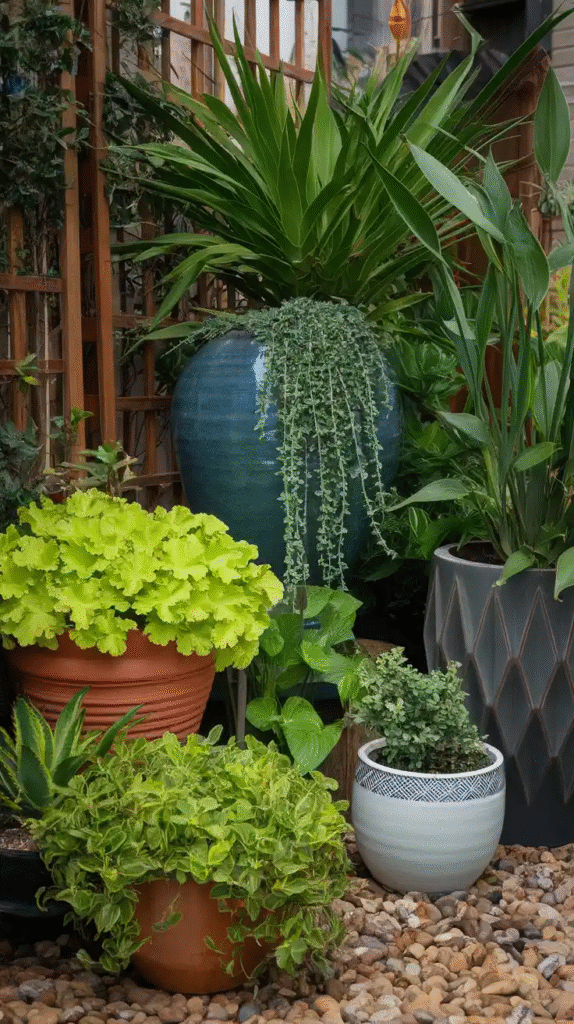
In a larger garden bed, leave a bare patch and create a cluster of pots right in the middle. It breaks up the plantings and adds a focal “island” of color and form. I like to use this trick in areas where nothing wants to grow—it turns a problem into a feature.
15. Add Glazed Pots for a Pop of Shine
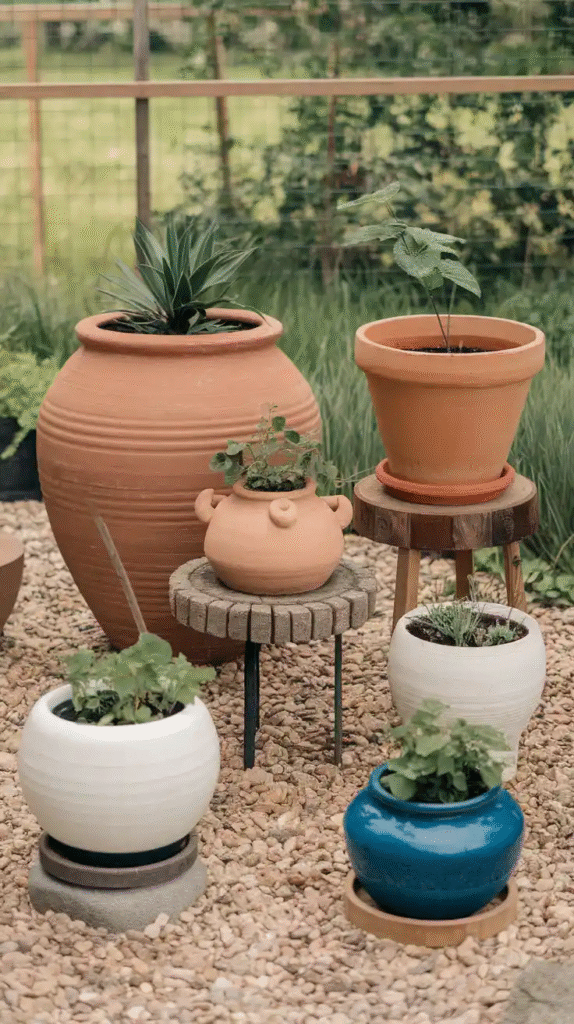
Glazed pottery catches light in ways raw clay never can. Use a few colorful glazed pots—turquoise, cobalt, ruby—to draw the eye. It’s like adding jewelry to your garden’s outfit. Even just one can transform a space.
16. Use Themed Pottery for Garden Rooms
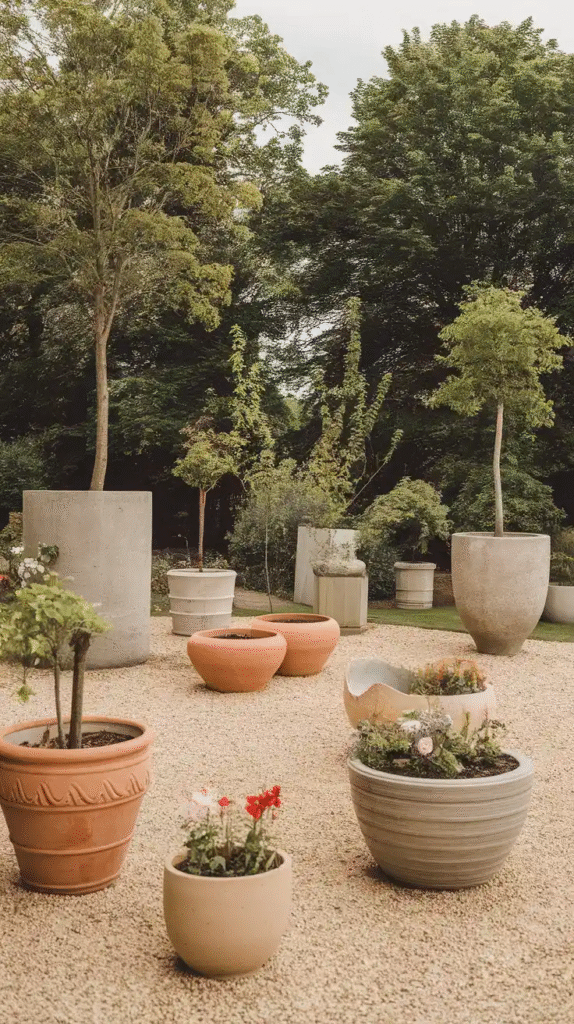
If your garden is divided into areas or “rooms,” use pottery to define each one with its own character. In my shady fern corner, I use mossy green and stone-flecked pots. In the sunny rose garden, I switch to French-style urns and distressed white pottery. It’s subtle, but it gives each area its own atmosphere.
17. Build a Pottery Border
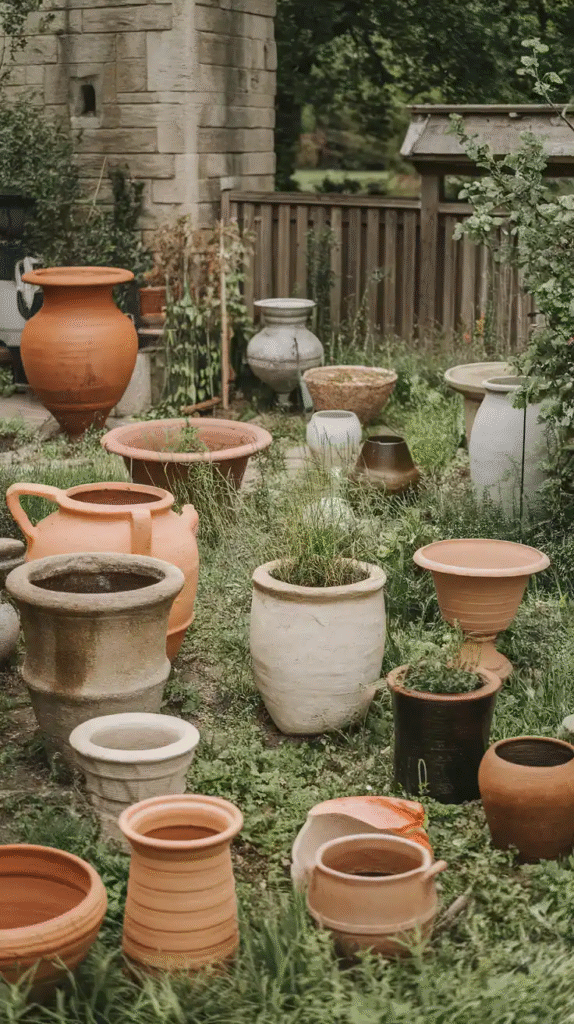
Instead of traditional edging, line beds with small upright pots. Alternate sizes and bury them partially for stability. It adds quirk and gives a terraced, handmade look to your garden borders.
18. Make a Hanging Pot Chandelier
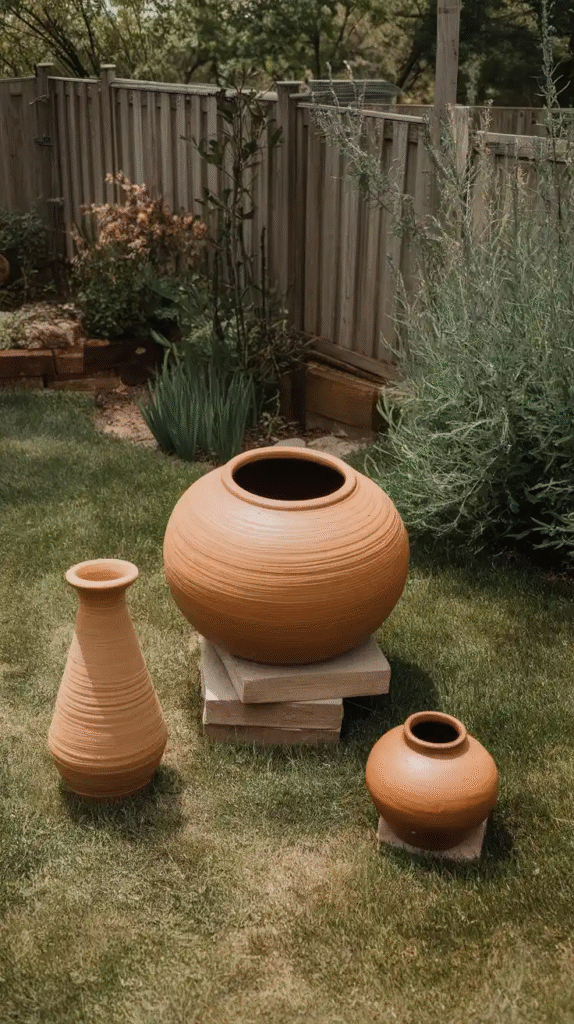
Find an old metal chandelier frame and attach small pots to each arm. Hang it from a tree or pergola beam and fill with trailing plants like string-of-pearls or small ivy. It’s whimsy in three dimensions—and it looks spectacular at sunset.
19. Use Pottery as Plant Theater
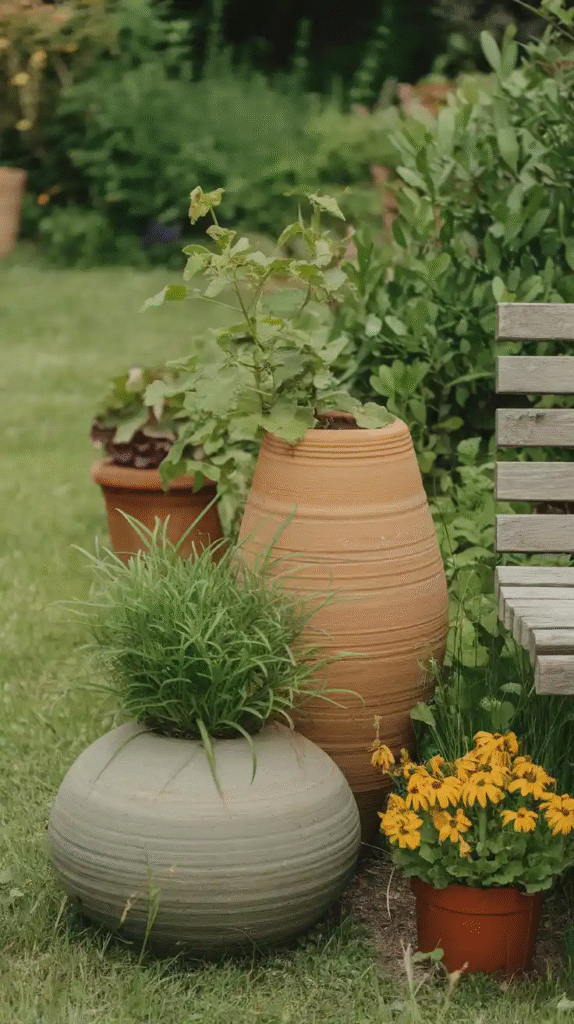
Set up a small wooden stage, shelf, or crate stack in the garden and arrange pots like a cast of characters. Tall ones in the back, showy blooms in the front. Think of it like a stage where each plant gets a spotlight.
20. Try Textured Pots with Simple Plants

Let the pot do the talking. Use pots with carved surfaces, ribbed edges, or geometric patterns and pair them with minimal green foliage. The contrast between form and simplicity makes each stand out more.
21. Plant Pot Boundaries Along Gravel Paths
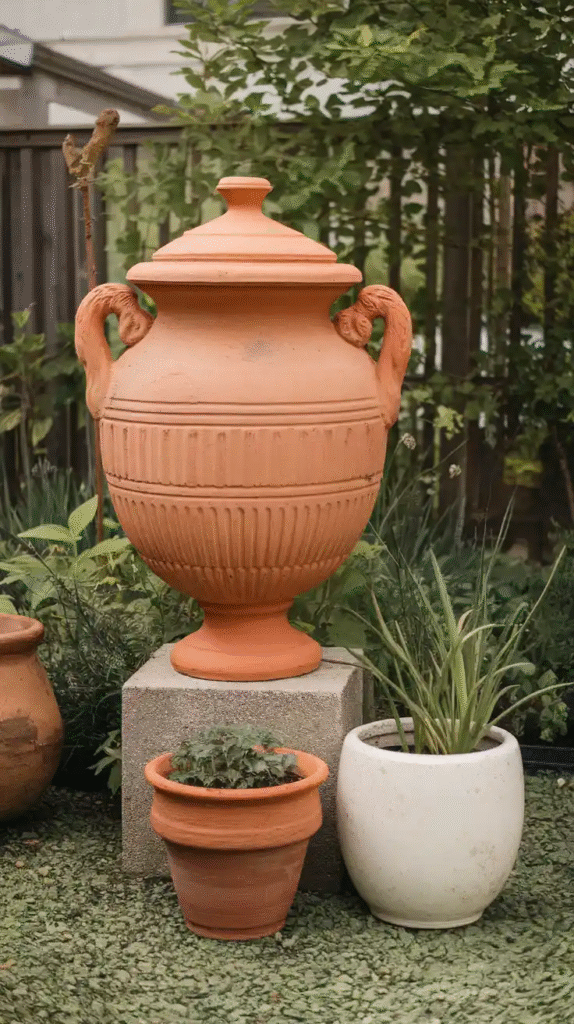
Add larger pots right along gravel or stone paths. Choose square or cylinder pots for symmetry and repeat at regular intervals. It draws walkers into your space and adds structure to the soft lines of a garden.
22. Combine Vertical and Ground Pottery
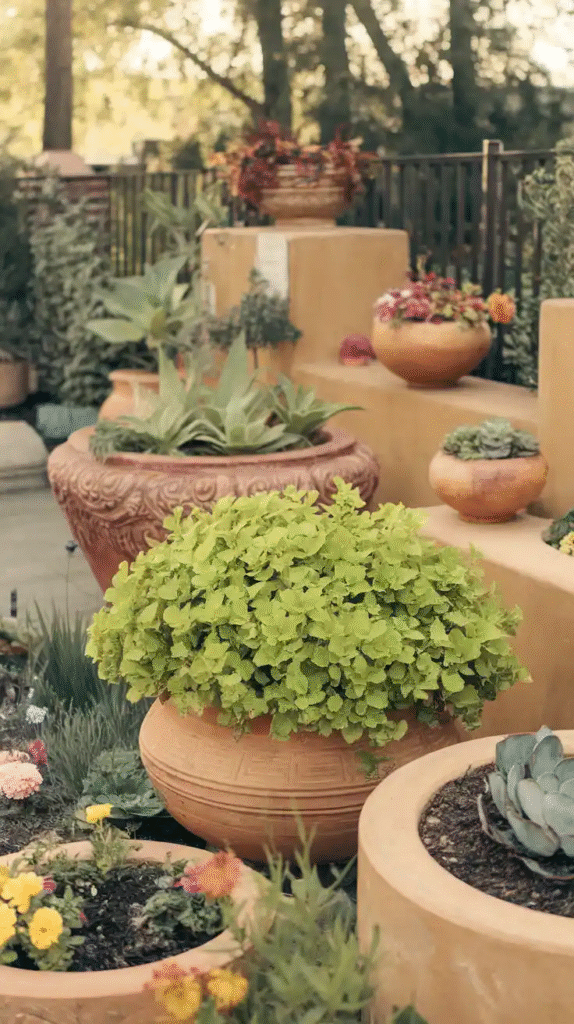
Don’t think only in ground level. Add a stack of wooden crates, garden shelves, or an old ladder and display pots vertically. Combining high and low elements adds drama and gives your eye more to explore.
23. Treat Pots as Seasonal Decor
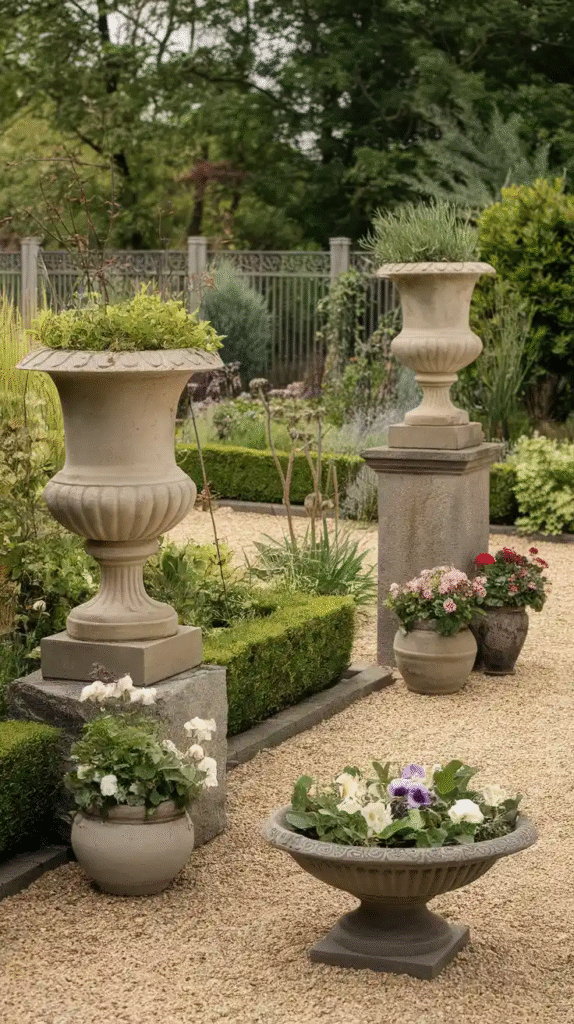
Switch out your pottery by season. In spring, use light pastel tones or white clay. In summer, go bold with blues and deep greens. Autumn calls for rusty reds, ochre, and pumpkin-colored glazes.
Winter? I use simple black and evergreen combinations with berries or pine for texture. Let your pottery dress for the weather—it’s one more way to keep the garden alive, even when plants sleep.
Conclusion
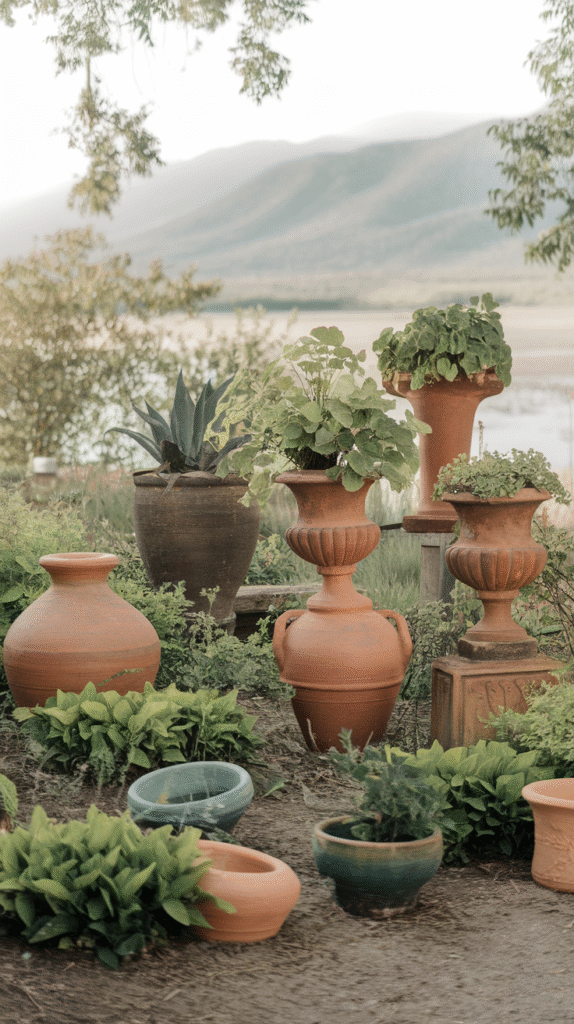
Pottery is more than plant housing. It’s expression, experimentation, and evolution. Some pots will crack. Some will fade. But in those imperfections lie the charm. You’ll find yourself forming attachments to specific pieces, remembering where you got them, who helped you paint them, what bloomed in them first.
If you take one thing from this list, let it be this: Don’t aim for perfect—aim for personal. Your garden doesn’t need to look like a catalog page. It needs to feel like you. Whether that’s a row of classic terracotta or a riot of colorful glaze and mosaic shards, your pottery should reflect your rhythms, your mood, your joy.

